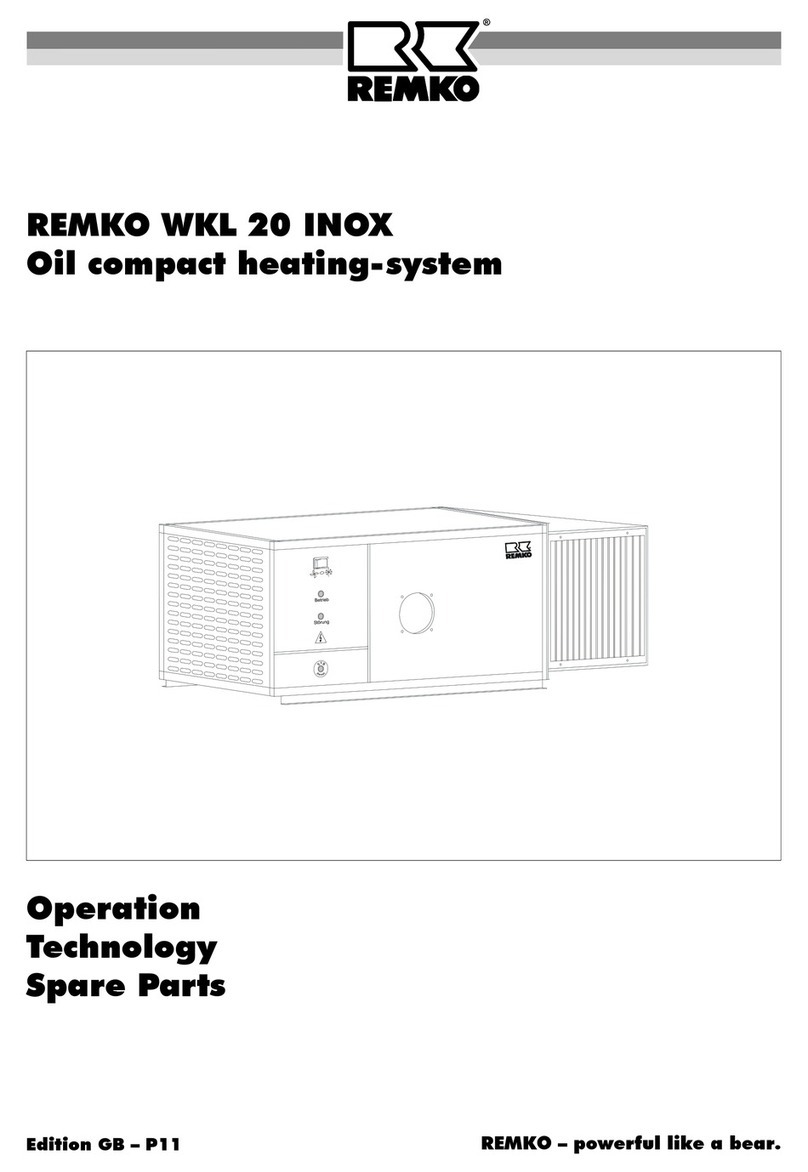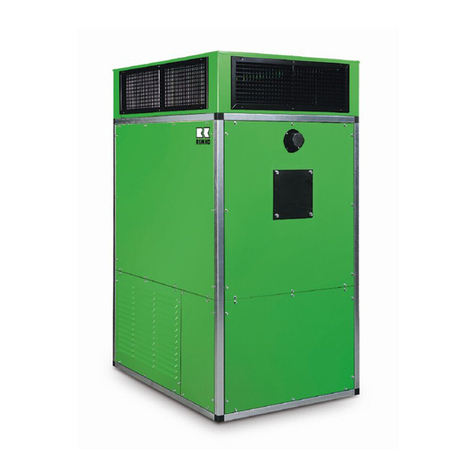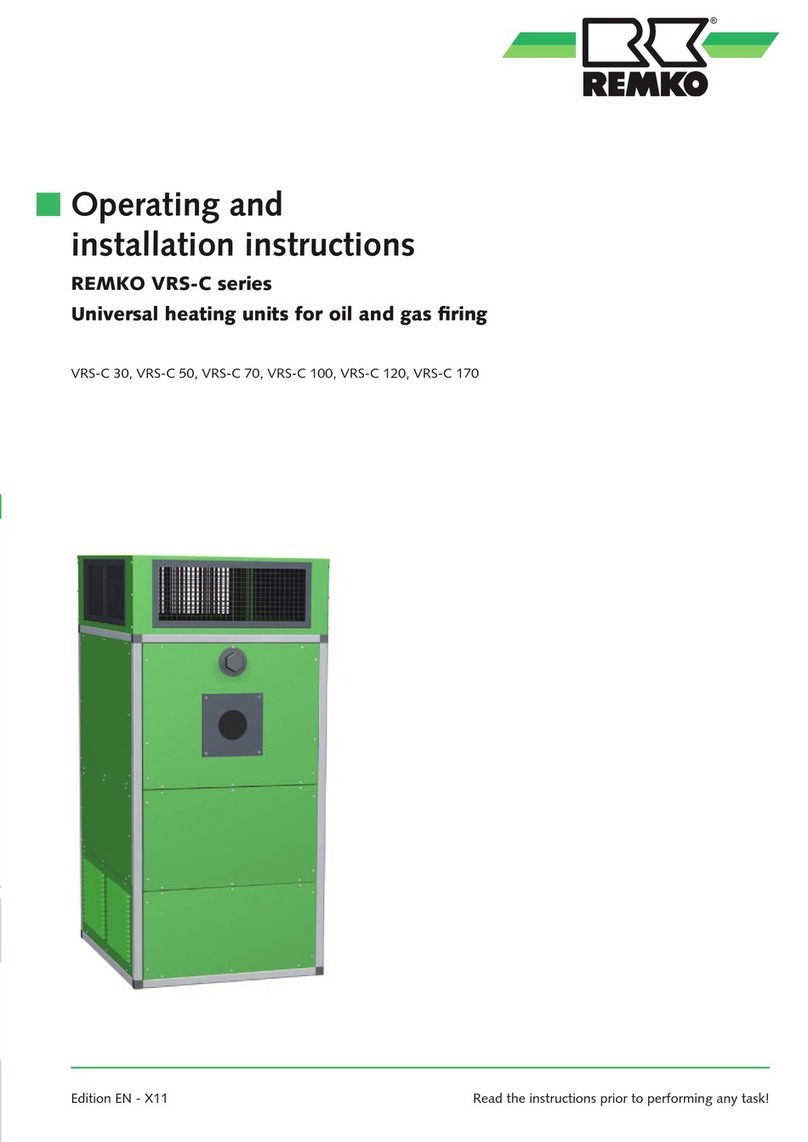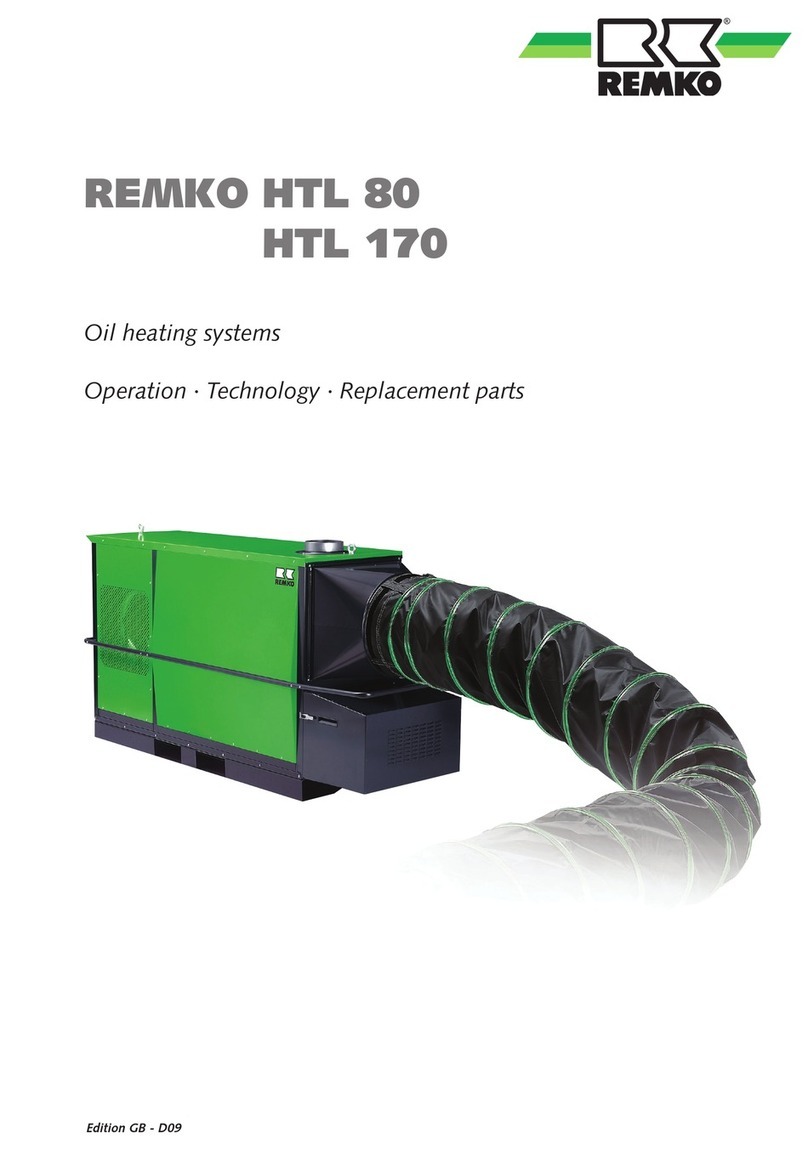
4
REMKO HTL 400
Only approved forced air oil
burners as LE models in
compliance with DIN EN 230
und DIN EN 267 may be used.
IMPORTANT
Never interrupt the mains
connection before the entire
cool-down phase comes to an
end (except in emergency
situations).
IMPORTANT
NOTE
For optimal operation, the
device should not be used
within an environment where
the surrounding temperature is
in excess of 25 °C.
The device is directly fuelled with
EL heating oil or diesel fuel and
designed for fully automatic,
universal and trouble-free
operation.
The device is fitted at the works
with a large volume fuel preheater
and fuel filter. All components are
mounted behind a locking door to
protect them from the
elements
.
The device is operated with a
separate forced air oil burner and is
suitable for outside operation.
The device is fitted with a low
maintenance high performance
fan as well as mounted switching
and controlling device.
The device is designed for two-
stage operation and has an optical
indicator for the individual
operating functions.
The device consists of a stable
frame structure supported on
robust transport runners.
As a guarantee for many years of
operation, particularly in the open
air, the frame structure and cover
panels are constructed from rust
free stainless steel. All internal
construction parts are also
assembled from corrosion-resistant
material.
The device corresponds with the
basic safety and health require-
ments of the pertinent EU
regulations and is easy to operate.
When using the device, always observe the respective local construc-
tion and fire protection ordinances as well as the regulations of
the employers‘ liability insurance association
Description of Device
■
Mobile fuel-tanks may only
be used in compliance with the
“TRBF 210 und 280" technical
regulations for combustible
fluids
■
Possible requirements of
respective local state build-
ing regulations must also be
observed
■
The intake guard grille must
always be free of dirt and loose
objects.
■
Never insert foreign objects into
the device
■
Before all work on the device,
the mains plug must be re
moved from the mains socket
■
Safety devices must never be
short-circuited or disabled
■
The device must only be
operated by persons who have
been trained in their correct
use.
■
The device must be set up
and operated in such a way
that nobody is in any danger
from exhaust gases, hot air or
radiant heat and the danger of
fire is prevented.
■
The device must only be
operated in rooms where there
is an adequate supply of air to
support combustion.
■
Without chimney ducting, the
device must only be operated
within well-ventilated rooms.
The permanent presence of
persons at the set-up site is not
permitted under such circum
stances.
Corresponding prohibition signs
must be posted at the entry
ways.
■
A safety zone of 1.5 m around
the device must be observed,
also for non-flammable objects.
■
The device must only be set
up on a level and non-
flammable surface
■
The device must not be set up
or operated in an environment
where there is a hazard of fire
or explosion
■
All electrical lines of the device
must be protected from dam
age (e.g. due to animals)
■
The device may not be exposed
to a direct water spray e.g. high
pressure hoses etc.
Safety Notices































